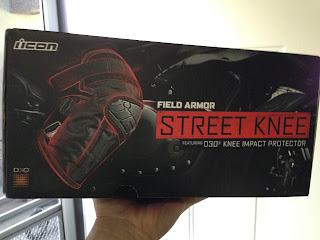Yamaha TX750 Restoration: Brake Caliper Rebuild…kinda.
As part of adding European style dual disc brakes to the TX750, I had to rebuild the stock caliper. I bought a Mike's XS caliper seal rebuild kit some time ago, but never used it. Instead I just bought a second caliper. Now that I was able to find the second disc cheap enough, it was time to dig out the parts and finally rebuild this thing.
First thing I did was clean up the whole caliper. I put all of the parts in my ultrasonic cleaner and then used my compressor to dry them and evacuate the fluid passages of water. I used some #0000 steel wool to polish the pistons and caliper bores. The pistons have some slight pitting. I will replace them eventually, but for now they will work.
For the outside of the caliper I used a wire brush to clean up the loose paint. In the past I used regular black spray paint to make the caliper pretty. Unfortunately I ended up with some leaks in the system that got brake fluid on the caliper. Regular spray paint is no match for the corrosive power of brake fluid and my paint job got ruined. I will get some caliper paint to make this caliper look as good as the other one.
The caliper bores were cleaned using the steel wool along with the caliper halves where they mate together. The bores were perfect and the mating surface is perfectly flat. I used my compressor again to ensure that there were no blocks in the passages from the bits of steel wool left behind from the polishing and moved on to install the seals.
There are five seals in the seal rebuild kit. One small passage seal where the fluid goes from one side of the dual piston caliper to the other. There is one thin dirt seal per bore and one main seal per bore as can be seen above. The dirt seal (top black ring in the pic) prevents dirt and water from getting to the main seal and eroding it. The main seal fits tightly around the piston to seal the fluid in the caliper. It also acts as a spring to pull the piston back off of the brake pad after you release the brake lever. It doesn't spring back completely and it is normal to hear the brake pads slightly dragging on the disc even when there is no pressure on the front brake lever.
Once the seals were in I popped the pistons in place. I used a small amount of brake fluid to lubricate the piston before pressing them into place. The seals seemed to work as fluid shot out of the transfer passage when I pressed the pistons in showing me that the system was tight. I made sure that I pressed the pistons in squarely to the bore as there is a very exact fit between the pistons and the caliper bore.
Congratulating myself heartily for a job well done I was wiping the caliper down prior to taping it up for paint. I kept getting brake fluid on my bench and just thought it was coming from the fluid bleed valve area as I hadn't installed the bleed valve yet. That is when I noticed that the piston on the right in the above pic was slipping in and out of the bore with no resistance. Not good. If I left it like this I would have brake fluid gushing out onto my disc eventually draining my system and coating all of the parts with slippery brake fluid until I crashed and died.
I had a beer to go think through my dilemma. I took the caliper back apart and pressed the pistons into the bores with a bit more force than the first time. Hammers may have been involved. This time they seemed to seat further into the bore and didn't flop around. I will call this a partial victory until I can hook them up to the lever and give them a test.
In the next post I install the new disc onto the wheel and prep the caliper for paint. Come back soon.
Blue








Comments
Post a Comment
Thanks for your comments and for following My Motorbike Obsessions!